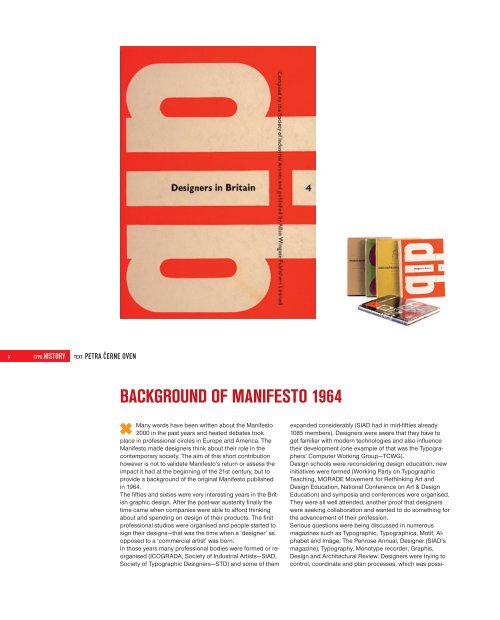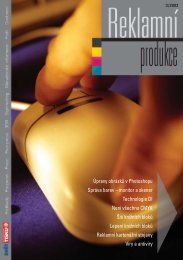You also want an ePaper? Increase the reach of your titles
YUMPU automatically turns print PDFs into web optimized ePapers that Google loves.
<strong>TYPO</strong>.history<br />
expanded considerably (SIAD had in mid-fifties already<br />
1085 members). Designers were aware that they have to<br />
get familiar with modern technologies and also influence<br />
their development (one example of that was the Typographers’<br />
Computer Working Group — TCWG).<br />
Design schools were reconsidering design education, new<br />
initiatives were formed (Working Party on Typographic<br />
Teaching, MORADE Movement for Rethinking Art and<br />
Design Education, National Conference on Art & Design<br />
Education) and symposia and conferences were organised.<br />
They were all well attended, another proof that designers<br />
were seeking collaboration and wanted to do something for<br />
the advancement of their profession.<br />
Serious questions were being discussed in numerous<br />
magazines such as Typographic, Typographica, Motif, Alphabet<br />
and Image, The Penrose Annual, Designer (SIAD’s<br />
magazine), Typography, Monotype recorder, Graphis,<br />
Design and Architectural Review. Designers were trying to<br />
control, coordinate and plan processes, which was possitext.<br />
petra černe oven<br />
Background of Manifesto 1964<br />
Many words have been written about the Manifesto<br />
2000 in the past years and heated debates took<br />
place in professional circles in Europe and America. The<br />
Manifesto made designers think about their role in the<br />
contemporary society. The aim of this short contribution<br />
however is not to validate Manifesto’s return or assess the<br />
impact it had at the beginning of the 21st century, but to<br />
provide a background of the original Manifesto published<br />
in 1964.<br />
The fifties and sixties were very interesting years in the British<br />
graphic design. After the post-war austerity finally the<br />
time came when companies were able to afford thinking<br />
about and spending on design of their products. The first<br />
professional studios were organised and people started to<br />
sign their designs — that was the time when a ‘designer’ as<br />
opposed to a ‘commercial artist’ was born.<br />
In those years many professional bodies were formed or reorganised<br />
(ICOGRADA, Society of Industrial Artists — SIAD,<br />
Society of Typographic Designers — STD) and some of them
















